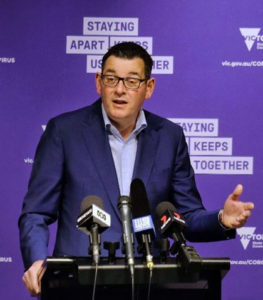How to deliver COVID-19 messages to CALD communities
A new study has identified the keys to successfully communicating messages about fighting COVID-19 to members of culturally and linguistically diverse (CALD) communities.
Researchers from Monash University reached out to some of Victoria’s diverse communities to find out if the government and health authorities could better communicate with them.
 “From a behavioural science perspective, we know working in partnership with a target audience helps to understand what drives their behaviours and how best to communicate health messages that people respond to,” said lead researcher Professor Helen Skouteris, of Monash Centre for Health Research and Implementation.
“From a behavioural science perspective, we know working in partnership with a target audience helps to understand what drives their behaviours and how best to communicate health messages that people respond to,” said lead researcher Professor Helen Skouteris, of Monash Centre for Health Research and Implementation.
The research identified five key areas when communications with diverse communities could be improved.
Firstly, the researchers said, it was important to involve communities in developing strategies.
“During last summer’s bushfires, Australia’s Islamic community mobilised to support the relief efforts, delivering truckloads of supplies to victims and cooking breakfasts for firefighters. These efforts allowed other multicultural communities to understand the severity of the crisis and also contribute,” they said.
“This kind of cooperation is now being seen in the coronavirus pandemic, too. Members of various multicultural groups are working together to educate their communities about the pandemic and how they can help control the spread. This empowers communities to be part of the solution by developing strategies together and learning from one another,” the researchers said.
Secondly, the study found communicators should ‘tailor messages to community values’.
“Understanding the importance of cultural context and values, and tailoring messages to align with those values, is also important when communicating with multicultural communities,” the researchers said.
Thirdly, it was important to ‘Use trusted messengers’, the researchers said.
“Health information also needs to be delivered by trusted messengers who are acceptable and accessible to the target community,” they said.
“For example, multicultural community leaders and health workers have been reaching out to their communities directly to help them access services,” the researchers said.
Fourthly, the researchers advised communicators to ‘use channels that your audience can access’.
“Each communication channel must be chosen with the individual community in mind. For example, the Chinese community engages with messages sent via WeChat. Other communities might engage better with Facebook videos or phone conversations with respected community leaders,” they said.
‘Establishing a national peak body for multicultural health issues,’ was the fifth key point identified by the study.
“The COVID-19 pandemic has created links across multicultural communities that have previously been unconnected. It has provided an opportunity to unite around a shared interest in community health and well-being, and to amplify community voices by coming together,” the researchers said.
“What’s lacking is a national platform to represent and support cooperative partnerships and working relationships across multicultural communities.
The creation of such a body would allow multicultural leaders to come together to share what they’ve learned and advise the national cabinet on health issues related to their communities,” they said.












